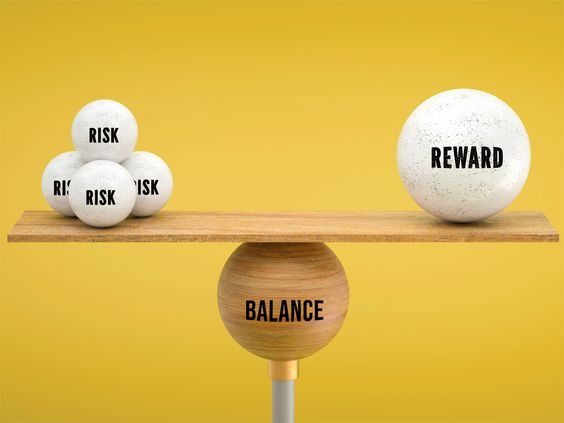When you’re at a buffet, what kind of person are you? Do you stick with the familiar dishes or are you willing to explore the available options and try something new? Your risk appetite determines how adventurous you’ll be.
Sure, when it comes to investments, the stakes are a lot higher than a stomach ache because you ate something your stomach doesn’t agree with. However, the premise is the same.
Your risk appetite measures how comfortable you are with the ups and downs of the investment world. In this article, we will explore what risk appetite means, how to assess yours, and why it’s essential for your financial journey.
What is risk appetite?
Risk appetite is the level of uncertainty— and potential negative consequences— you’re willing to accept in pursuit of your goals. It is essentially the amount of risk that you can “live” with and varies from person to person. Some people like to play it close to the vest while others can throw caution to the wind and have a good night’s sleep.
Although used interchangeably, risk appetite and risk tolerance are slightly different terms. A quick Google search will give you varied definitions of risk tolerance and even more definitions that use risk appetite and risk tolerance interchangeably. However, going by the definition given by the International Organization for Standardization (ISO) in the ISO Guide 73:2009 Risk Management– Vocabulary, risk tolerance is an organization’s or stakeholder’s readiness to bear the risk after risk treatment in order to achieve its objectives. Risk treatment here involves implementing risk management strategies to reduce the potential impact of identified risks.
Now that you understand the basics of risk appetite, let’s explore the different risk appetite levels. Which category best describes you?

Assessing the different risk appetite levels
No two people have the same risk appetite— even when these individuals fall into the same category.
Generally, risk appetite levels fall into three categories:
- Risk-Averse (Conservative): The individuals in this category are generally cautious and take the least risk available in the market. For them, avoiding losses is more important than making high gains as they are uncomfortable with uncertainty. So, they go for the options they feel are the safest.
This category is a stark contrast to the risk-seeking category. For instance, a risk-averse investor might prefer safe investments like peer-to-peer lending, while a risk-seeking investor might be more comfortable with adventurous options like stocks or cryptocurrencies.
- Risk-Neutral (Moderate): Individuals in this category strike a balance between caution and ambition. They are more cautious than aggressive investors, but they’re not afraid to take calculated risks. They diversify their investments to manage risk and avoid excessive losses, even if it means sacrificing some potential gains. Risk-neutral investors would also consider investing in peer-to-peer lending as this has a higher return-to-risk ratio and fits their appetite.
- Risk-Seeking (Aggressive): Individuals in this category are well-versed in the market and are comfortable with taking high levels of risks in favor of the potential high returns. With their nerves of steel, they are also prepared for the possibility of the market falling as they are used to market fluctuations. Essentially, this category will most likely always try the new dishes at the buffet, even if they’re a bit spicy or unfamiliar.
It’s important to note that these categories are a generalization, and individual risk appetites can vary depending on various factors such as age, financial situation, and personality traits.
Why should you know your risk appetite?
Knowing your risk appetite is like knowing yourself— what makes you tick, your limits and what risks you are willing to take.
Understanding your risk appetite is vital for making informed decisions about your finances. Here’s why:
- Tailored Investment Strategies: Knowing your risk appetite helps you invest in options that align with your comfort level and financial goals.
- Risk Management: By assessing and knowing your risk appetite, you can discover areas where you need to implement appropriate risk treatment strategies to mitigate potential losses.
- Emotional Resilience: Knowing your risk appetite can help you stay calm and keep your head clear enough to make rational decisions during potential moments of panic like with market fluctuations.
- Goal Achievement: Understanding your risk appetite is crucial for setting realistic financial goals and creating a plan to achieve them.
- Avoiding Regret: By investing within the limits of your risk appetite, you are less likely to regret the decisions you make about your finances in the long run.
Knowing your risk appetite empowers you to make financial choices that are not only sound but also align with your personality and values. Take this quick quiz for more insights into your risk appetite.

Take the Next Step with Sycamore
Now that you’ve learned about risk appetite and its importance in financial decision-making, it’s time to put your knowledge into action.
Sycamore’s Peer-to-peer lending platform offers a safe and convenient way to invest based on your risk appetite.
With low investment value limits and competitive interest rates, Sycamore makes it easy for you to start investing today.
Ready to take the next step? Sign up for a Sycamore account today and start diversifying your portfolio.






